design for results

Written by
Greg Ciro Tornincasa
Read time
2 minutes
Category
5 simple UI/UX practices to consider when designing to drive results.
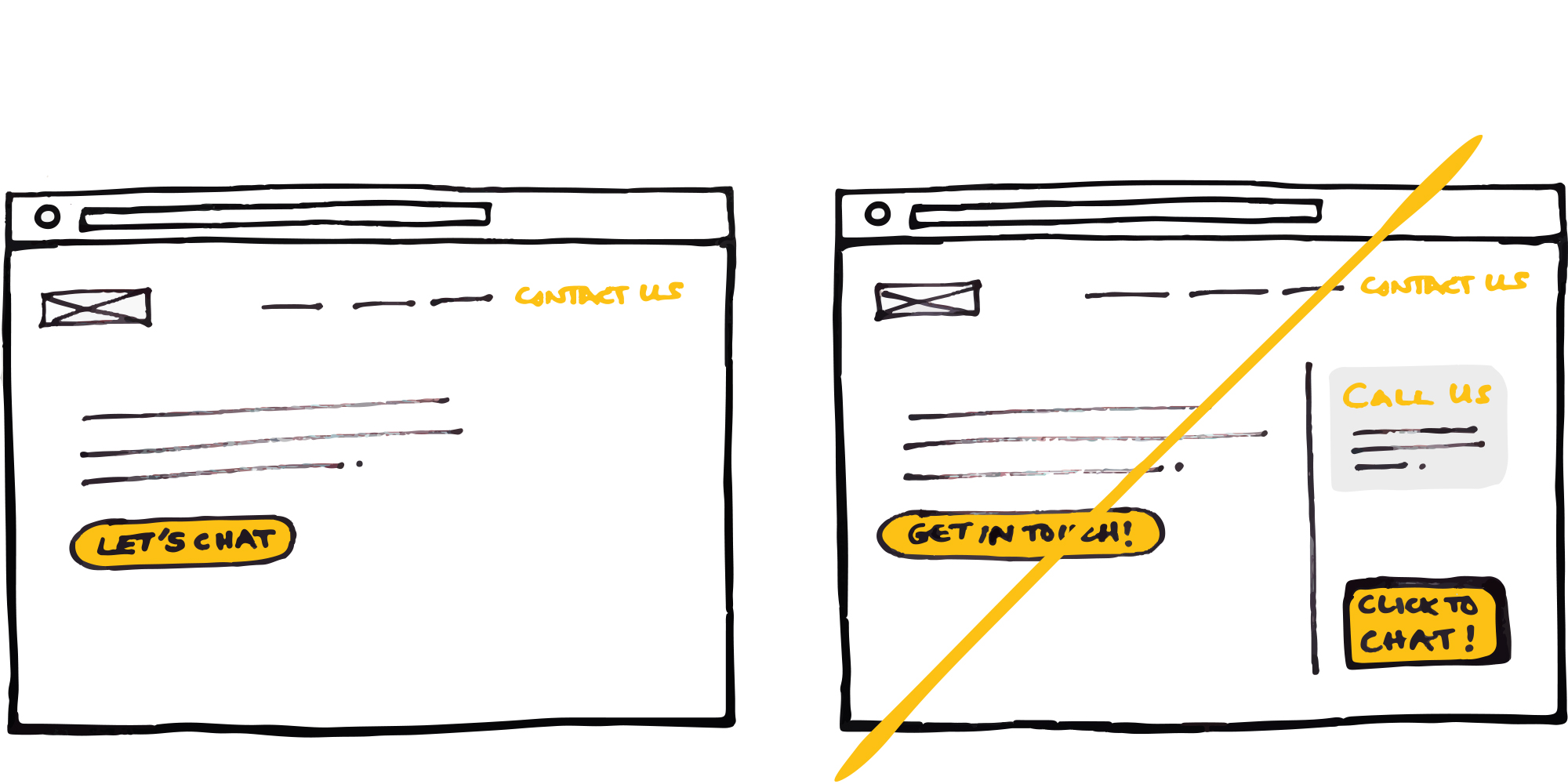
1. focused vs fragmented
Give a user more choices on how to complete the same action or task, and they’ll either take longer figuring out how to do it, or worse—shrug off making the decision because it’s not simple enough. Over time sites get cluttered with multiple CTAs all begging the user to do the same thing. The more fragmented the UI, the higher the learning curve is for your customers. Merge these similar functions for better hierarchy, clarity, and a happy UX.
Imagine there were only one or two laundry detergent choices during your next grocery run. So. Much. Easier.
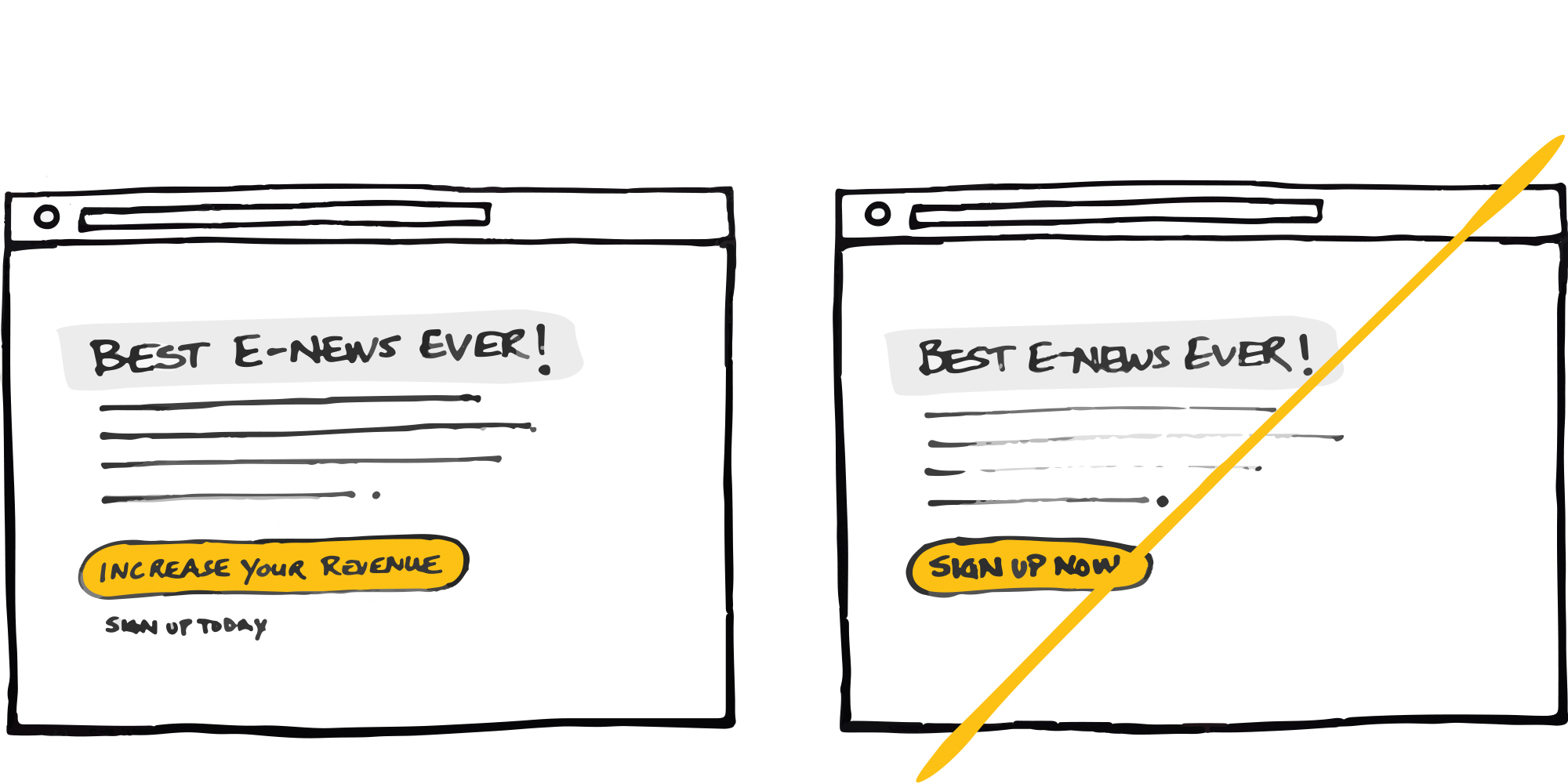
2. benefit vs task
Many of us ask ourselves, “what’s in it for me?!”. Your users, if they are human, are likely asking the same. Rather than asking for their data in a task driven manner, tell them how they’re going to benefit. Are you going to help increase savings? Are you going to give them awesome content exclusive to this click? We’d bet on higher conversion rates if you mention the benefit.
We recommend keeping this online. Next time your BFF asks to meet for drinks, it’d probably be best not to ask the benefit. (Hint. It shouldn’t be the vodka.)
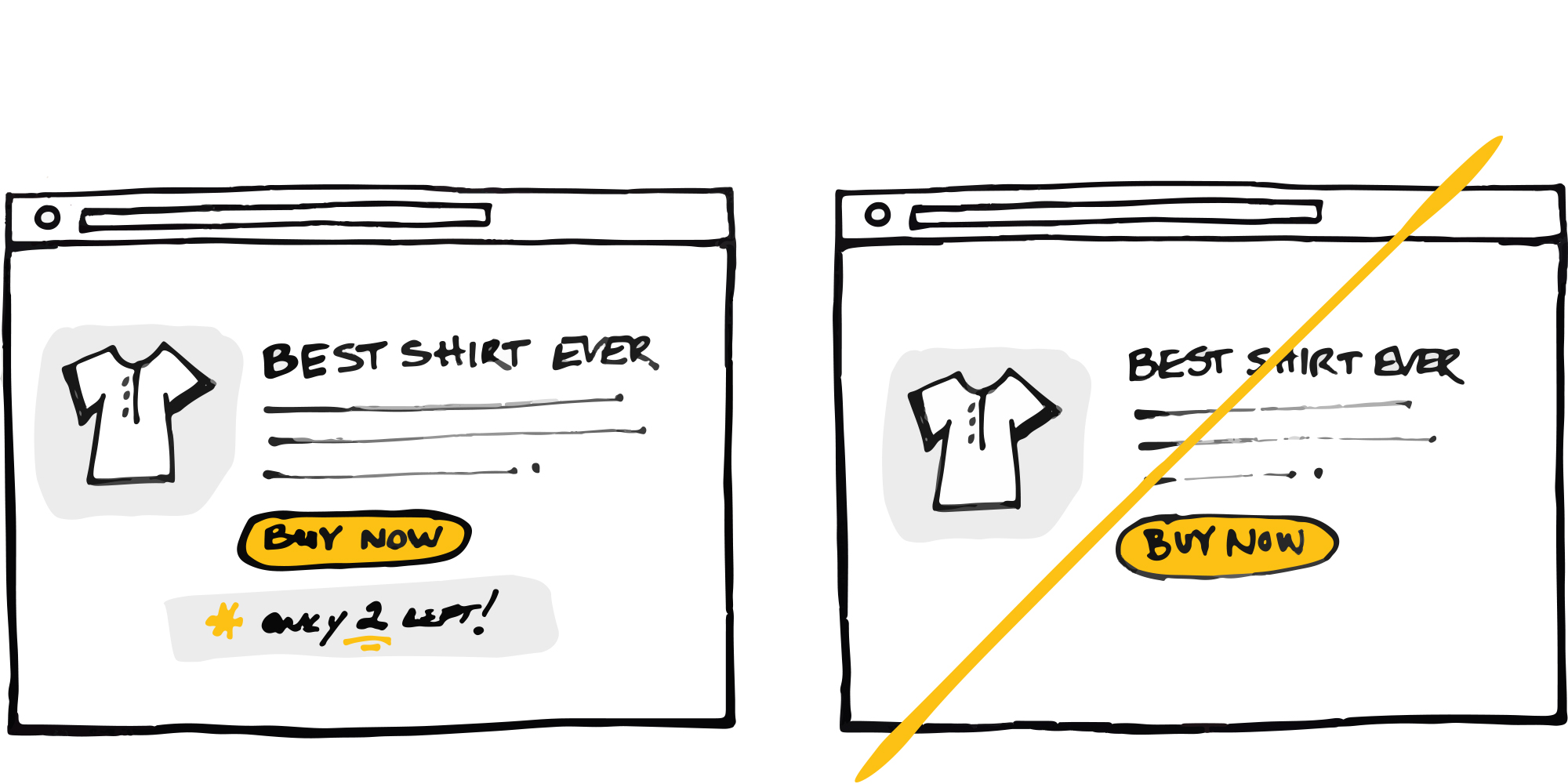
3. scarcity vs abundance
When there is less of a commodity, we tend to value (and want) it more. You’re more likely to buy that shirt if there are only two left, as opposed to many. Supply vs demand, short supply, and rarity all play a factor. It’s a cultural trope to “want what you can’t have”, but it’s also a principle based in decades of psychological research.
Aston Martin has this concept down. How many of these hand built British beauties do you see on the road? Not many. And that’s exactly their strategy.
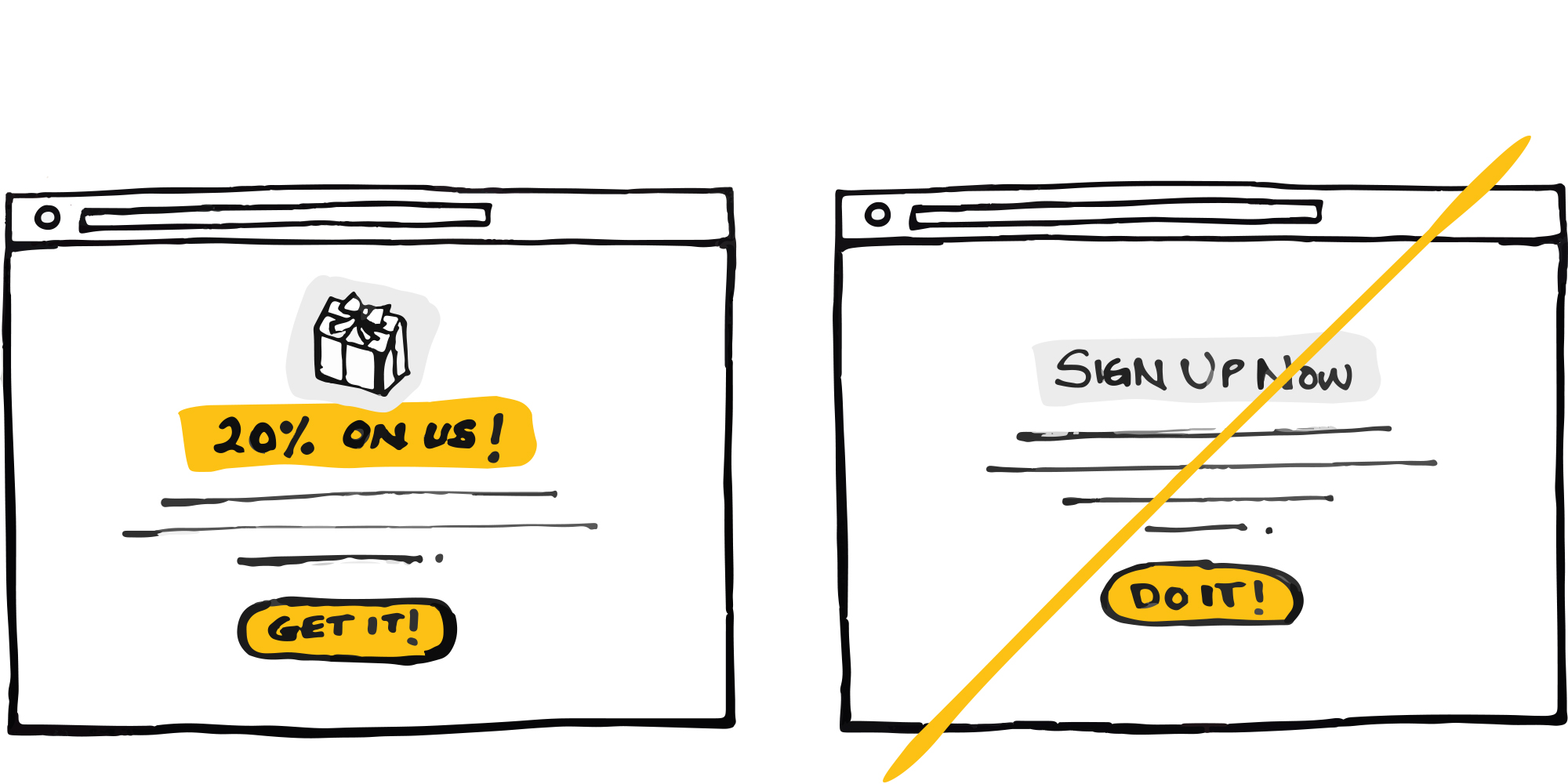
4. give vs take
Similar to #2 above, a friendly gesture can be powerful. Persuading users with a gift works, as obvious as it sounds. Rather than asking them to sign up for something out of the goodness of their hearts, offer an incentive to do it. Be nice, it’s usually reciprocated!
Dogs are trained to do good things for treats. It’s worked for a long time.
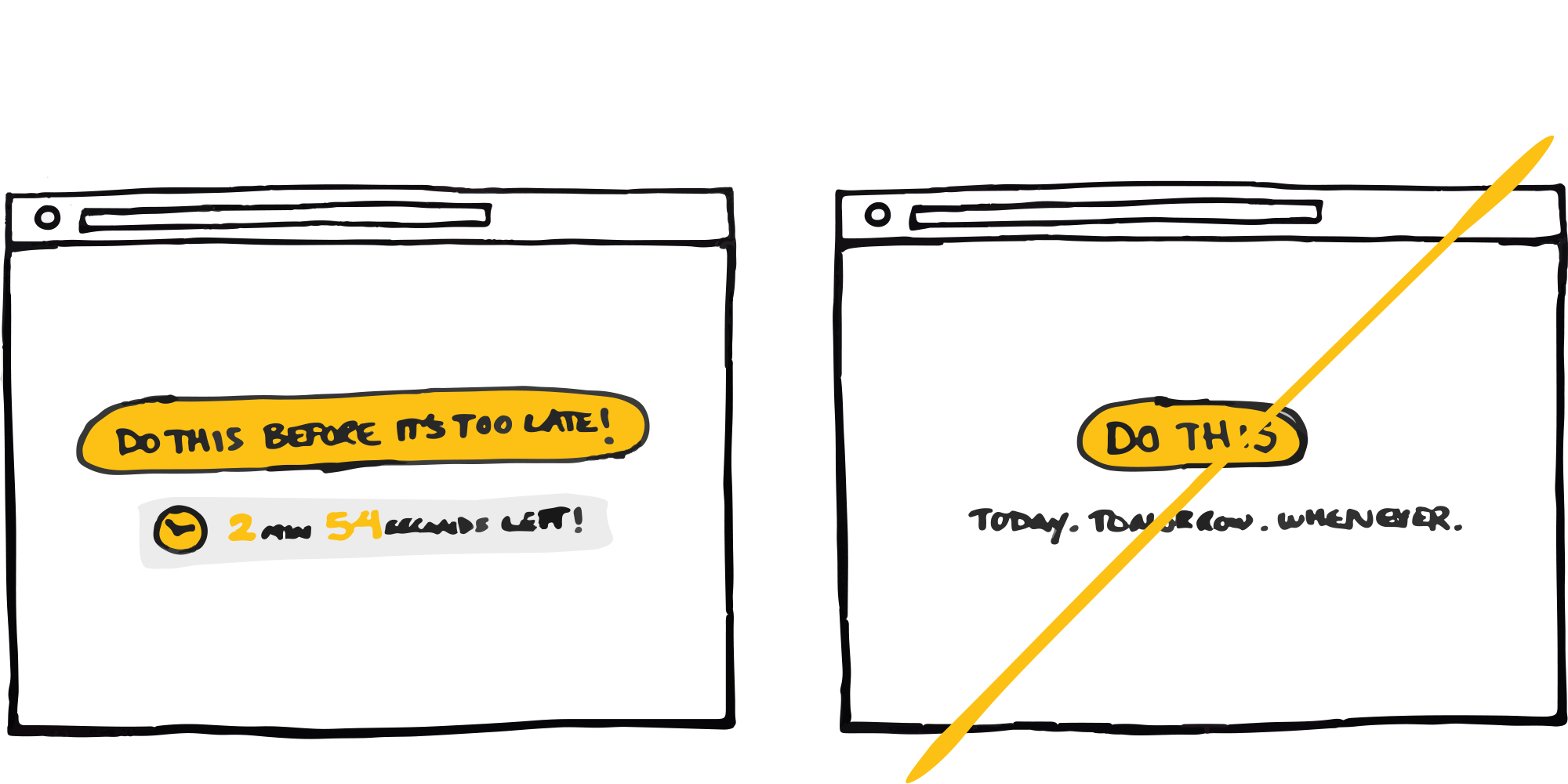
5. urgency vs timelessness
Like #3 above, urgency is a similar tactic to get users to do something now, not later. If that Cherner chair you’ve been eyeing (swoon) is on sale for another 2 hrs and 54 seconds—you’re more likely to pull the trigger (or clicker) now, rather than coming back later.
Let’s just say this is a marketing tactic I’m waiting for. Specifically in regards to a certain walnut arm chair.
we practice what we preach.
check out our results.
More
insights
Lorem ipsum dolor sit amet, consetetur sadipscing elitr, sed diam nonumy eirmod tempor.
©2025 300FeetOut All Rights Reserved | Privacy Policy